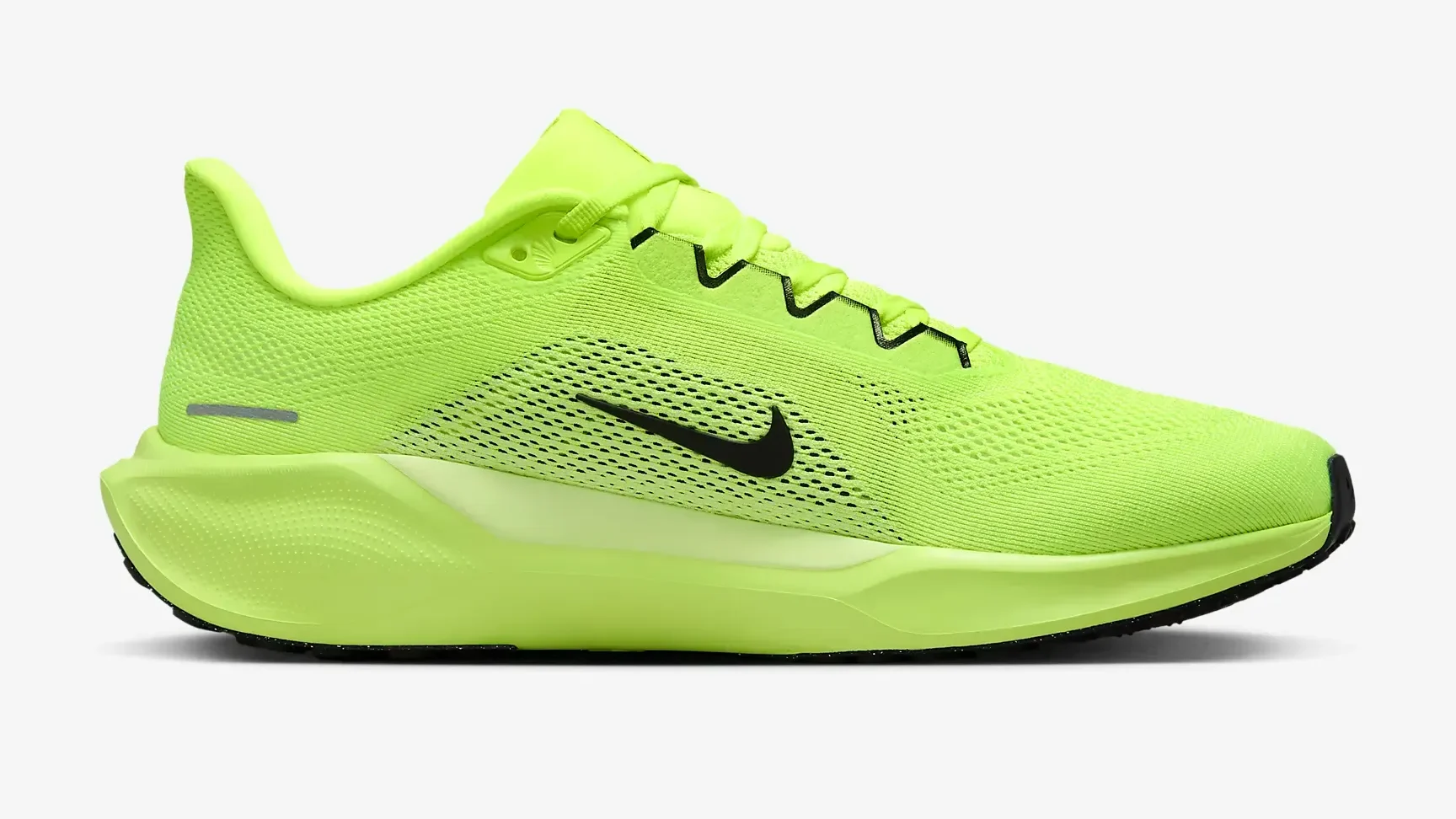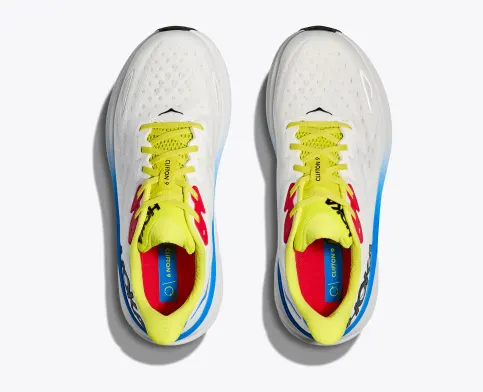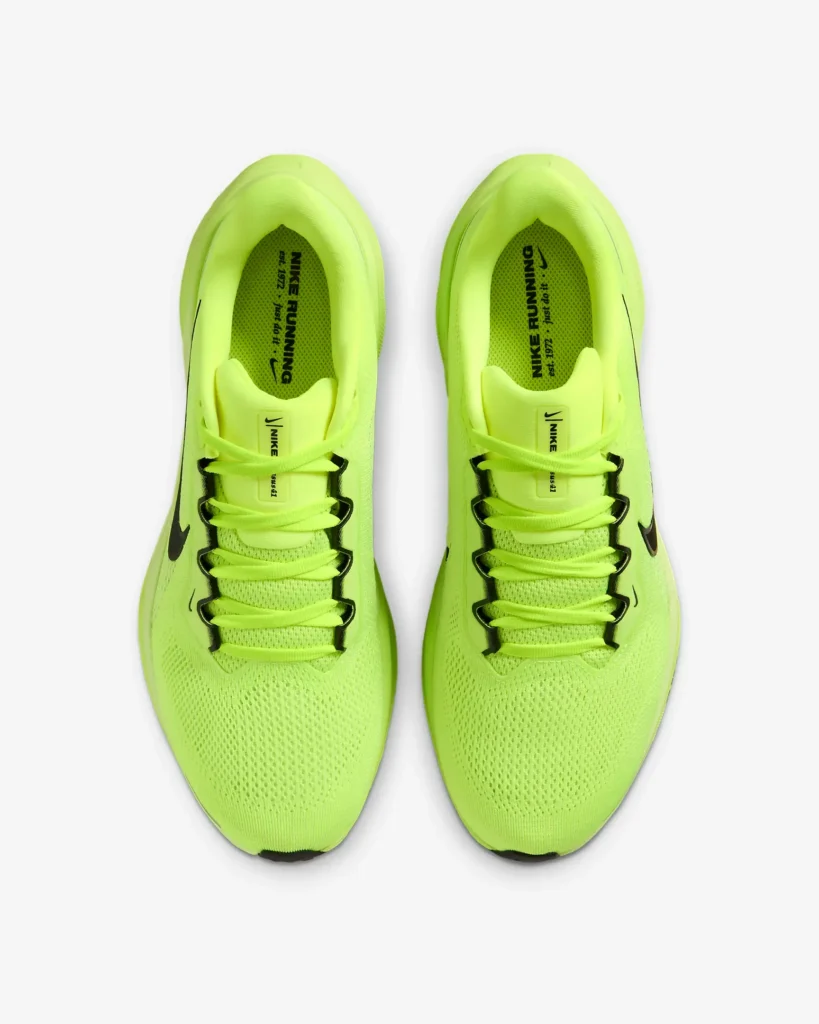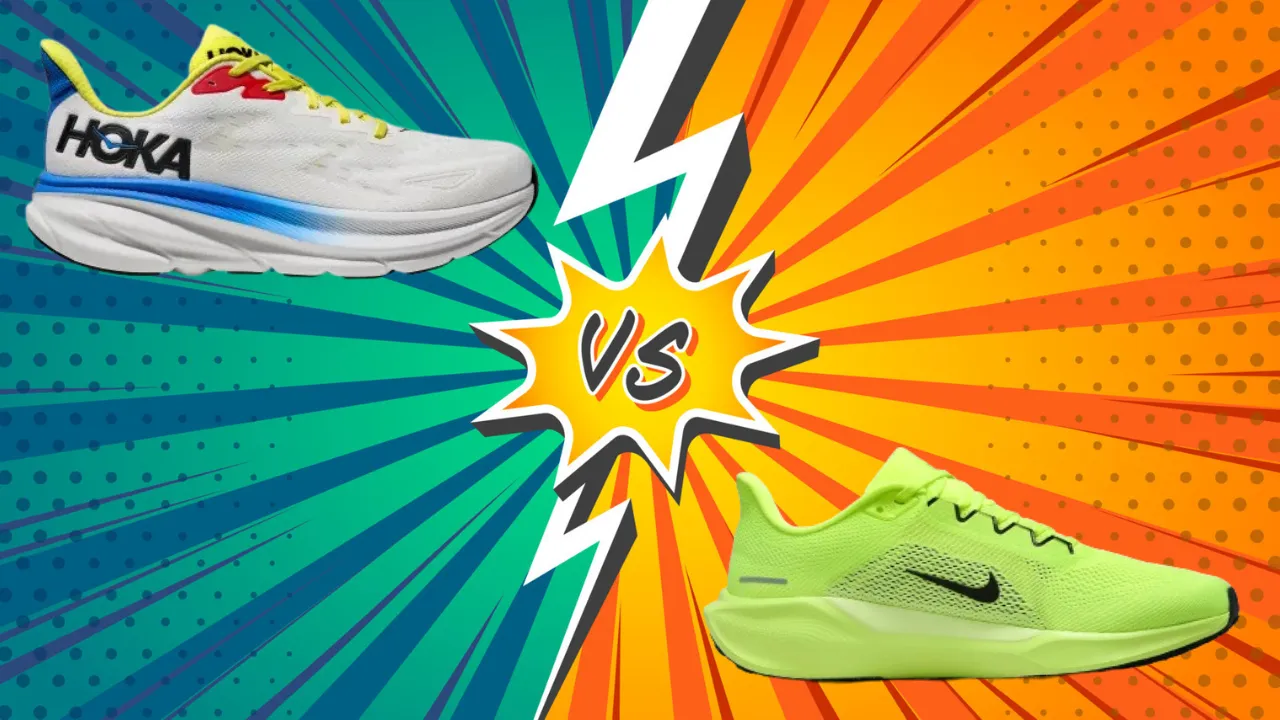Alright, let’s dive into the world of running shoes and compare two popular contenders: the Hoka Clifton 9 and the Nike Pegasus 41. Whether you’re a seasoned runner or just starting your fitness journey, choosing the right shoe can make all the difference.
These two models offer unique features and technologies, promising comfort and performance. But which one will come out on top? Let’s lace up and find out which shoe might be the perfect fit for your feet and your goals!
key takeaways:
- The Hoka Clifton 9 excels in maximum cushioning and comfort, making it ideal for long, easy runs and all-day standing. It’s slightly pricier but offers a plush ride and wider toe box.
- The Nike Pegasus 41 is more versatile, with responsive cushioning suitable for various paces and workouts. It’s slightly cheaper and features new ReactX foam technology for enhanced energy return.
- Both shoes use recycled materials and offer good durability, but the Clifton 9 may have an edge for high-mileage runners due to its Durabrasion rubber outsole.
- For walking and standing, the Clifton 9’s plush cushioning gives it an advantage, while the Pegasus 41’s responsiveness makes it better for mixed activities.
- The choice between these shoes depends on personal preference: prioritize maximum cushioning with the Clifton 9 or opt for versatility with the Pegasus 41.
Comparison Table between Hoka Clifton 9 And Nike Pegasus 41:
| Feature | Hoka Clifton 9 | Nike Pegasus 41 |
|---|---|---|
| Launched In | 2023 | 2024 |
| Stability | Neutral | Neutral |
| Flexibility | Moderate | High |
| Sizing | True to size | True to size |
| Weight | 8.70 oz (Men’s) | 10.4 oz (Men’s US 10) |
| Cushion | Plush | Responsive |
| Outsole | Durabrasion rubber | Waffle-inspired rubber |
| Midsole | Compression molded EVA foam | ReactX foam with Air Zoom units |
| Upper | Engineered knit | Engineered mesh |
| Retail Price | $145 | $140 |
Hoka Clifton 9 vs Nike Pegasus 41: Features Comparision
1) Materials: outsole, insole, upper sole
When it comes to materials, both shoes bring their A-game. The Hoka Clifton 9 features a Durabrasion rubber outsole, designed for longevity and grip. Its insole is part of the overall cushioning system, while the upper is a breathable engineered knit. This combination aims for a balance of durability and comfort.


The Nike Pegasus 41, on the other hand, sports a waffle-inspired rubber outsole, a Nike staple known for its traction and flexibility. The insole is plush and comfortable, working in tandem with the ReactX foam midsole.
The upper is constructed from an upgraded breathable engineered mesh, which Nike claims improves upon previous versions by reducing weight and increasing airflow.
Both shoes use recycled materials in their construction, with Hoka using recycled nylon and polyester in the laces, and Nike emphasizing their commitment to sustainability through their choice of materials.
2) Durability
In the durability department, both shoes are built to last, but they approach it differently. The Hoka Clifton 9’s Durabrasion rubber outsole is specifically engineered for extended wear, potentially giving it an edge in longevity. The compression-molded EVA foam midsole is known for maintaining its shape and cushioning properties over time.
Nike’s Pegasus 41 counters with its tried-and-true waffle-inspired outsole design, which has proven its durability over many iterations. The ReactX foam in the midsole is not only responsive but also designed to maintain its properties over many miles. Nike’s emphasis on recycled materials doesn’t seem to compromise durability, as they’ve likely put these shoes through rigorous testing.
Both shoes should hold up well for average runners, but high-mileage runners might notice differences over time. It’s worth noting that durability can also depend on individual running style and the surfaces you typically run on.
3) Fit
Fit is crucial for comfort and performance, and both shoes aim to provide a secure and comfortable experience. The Hoka Clifton 9 features a gusseted tongue that helps prevent tongue migration, ensuring a consistent fit throughout your run. The engineered knit upper is designed to hug the foot comfortably, adapting to different foot shapes.


The Nike Pegasus 41 boasts a plush collar and tongue, which contribute to a secure and comfortable fit. The engineered mesh upper is designed to conform to the foot while providing breathability. Nike has kept the same last (MR-10) as the Pegasus 40, which they claim offers their “best, most consistent fit.”
Both shoes are true to size for most runners, but it’s worth noting that Hoka tends to have a wider toe box, which might be preferable for those with wider feet or who like more room in the forefoot. The Pegasus 41 might feel more snug in comparison, which some runners prefer for a more locked-down feel.
4) Cushioning
Cushioning is where these shoes really start to differentiate themselves. The Hoka Clifton 9 is known for its plush cushioning, featuring a thick layer of compression-molded EVA foam. This provides a soft, protective feel underfoot, which many runners love for long, easy runs or recovery days. The Clifton 9 also incorporates Hoka’s Early Stage Meta-Rocker technology, designed to promote a smoother heel-to-toe transition.
The Nike Pegasus 41 takes a different approach with its responsive cushioning. It combines ReactX foam with dual Air Zoom units in the forefoot and heel. This setup aims to provide energy return and a more springy feel. Nike claims the ReactX foam is 13% more responsive than their previous React technology, potentially offering a more energized ride.
The choice between these cushioning systems often comes down to personal preference. Runners who prefer a softer, more protective feel might lean towards the Clifton 9, while those seeking a more responsive, energetic ride might prefer the Pegasus 41.
5) Stability
Both the Hoka Clifton 9 and Nike Pegasus 41 are classified as neutral running shoes, meaning they don’t have specific stability features for overpronators. However, they approach stability differently within this neutral category.
The Hoka Clifton 9 provides stability through its wider base and Meta-Rocker geometry. The shoe features a symmetrical bed of cushion without additional prescriptive technologies, aiming to provide support without forcing the foot into a particular movement pattern. The substantial cushioning can also contribute to a sense of stability for some runners.
The Nike Pegasus 41 relies on its ReactX foam midsole and Air Zoom units for stability. The foam provides a stable platform, while the Air units offer targeted cushioning and support. The snugger fit of the Pegasus can also contribute to a feeling of stability for some runners.
It’s important to note that stability is highly individual. Some runners might find the wider base of the Clifton 9 more stable, while others might prefer the more responsive feel of the Pegasus 41.
6) Value For Money
When considering value for money, we need to look at the price point, durability, versatility, and technology offered by each shoe. The Hoka Clifton 9 retails for $145, while the Nike Pegasus 41 comes in slightly cheaper at $140.
The Clifton 9 offers exceptional cushioning and comfort, making it a versatile shoe for various types of runs. Its durability and the potential for high mileage could make it a good value for those who prioritize comfort and don’t mind spending a bit extra.
The Pegasus 41, with its slightly lower price point, offers Nike’s latest cushioning technology and a versatile ride. Its reputation as a workhorse that can handle various types of runs adds to its value proposition. The use of recycled materials might also appeal to environmentally conscious consumers.
Both shoes offer good value, but the best choice depends on your priorities. If maximum cushioning is your goal, the extra $5 for the Clifton 9 might be worth it. If you’re looking for a responsive, do-it-all shoe at a slightly lower price, the Pegasus 41 could be your best bet.
Hoka Clifton 9 vs Nike Pegasus 41: Performance Testing
1) For Walking
When it comes to walking, both shoes offer comfort and support, but in different ways. The Hoka Clifton 9, with its plush cushioning and Meta-Rocker technology, provides a smooth and comfortable walking experience.
The thick EVA foam midsole absorbs impact effectively, which can be particularly beneficial for long walks or for those with joint sensitivities. The wider base of the Clifton 9 also offers stability, which some walkers might appreciate.
The Nike Pegasus 41, while designed primarily for running, also performs well for walking. Its ReactX foam and Air Zoom units provide responsive cushioning that can make walks feel more energized. The Pegasus might have a slight edge in breathability due to its upgraded mesh upper, which could be beneficial for longer walks or in warmer conditions.
For pure walking comfort, especially for longer distances, the Clifton 9 might have a slight edge due to its plush cushioning. However, if you alternate between walking and light jogging, the versatility of the Pegasus 41 could make it a better choice.
2) For Running
Both shoes excel in running, but they cater to slightly different preferences. The Hoka Clifton 9 shines in long, easy runs where comfort is key. Its plush cushioning and Early Stage Meta-Rocker provide a smooth, rolling ride that can help maintain form over longer distances. The lightweight design (8.70 oz for men’s) is a bonus for those long miles.
The Nike Pegasus 41 is more of an all-rounder. Its responsive cushioning makes it suitable for various types of runs, from easy jogs to tempo workouts. The ReactX foam and Air Zoom units provide energy return that can be particularly appreciated during faster-paced runs. At 10.4 oz (men’s US 10), it’s slightly heavier than the Clifton 9, but still relatively lightweight.
For runners who prioritize cushioning and comfort for long, slow runs, the Clifton 9 might be the better choice. However, for those who want a shoe that can handle a variety of paces and workouts, the Pegasus 41 offers more versatility.
3) For Standing All Day
When it comes to standing all day, cushioning and support are crucial. The Hoka Clifton 9, with its maximum cushioning philosophy, excels in this area. The thick EVA foam midsole provides continuous comfort and impact absorption, which can be a godsend for those on their feet all day. The Meta-Rocker geometry can also help reduce fatigue by promoting a natural foot roll.
The Nike Pegasus 41, while not as plush as the Clifton 9, still offers solid all-day comfort. The ReactX foam provides durable cushioning that maintains its properties throughout the day. The Air Zoom units in the forefoot and heel offer targeted cushioning in high-impact areas, which can be beneficial for long periods of standing.
For pure standing comfort, the Clifton 9 might have the edge due to its maximal cushioning. However, if your all-day standing involves periods of walking or other activities, the more responsive Pegasus 41 could be a better all-round choice.
4) For Plantar Fasciitis
For those dealing with plantar fasciitis, both shoes offer features that can help, but in different ways. The Hoka Clifton 9’s maximum cushioning can provide excellent shock absorption, reducing stress on the plantar fascia. The Early Stage Meta-Rocker can also help by reducing the load on the forefoot during toe-off, which can be beneficial for some plantar fasciitis sufferers.
The Nike Pegasus 41, while not as cushioned as the Clifton 9, offers targeted support that can be helpful for plantar fasciitis. The Air Zoom units in the heel and forefoot provide cushioning in key areas, while the ReactX foam offers a balance of cushioning and support. The slightly higher heel-to-toe drop (10mm compared to the Clifton 9’s 5mm) might also be beneficial for some plantar fasciitis sufferers.
It’s important to note that the best shoe for plantar fasciitis can vary greatly between individuals. While the Clifton 9’s maximal cushioning might provide more immediate comfort, the Pegasus 41’s balance of cushioning and support could be better for some. Consulting with a podiatrist or running specialist is always recommended for persistent foot issues.
Conclusion: Which Is Better For You
Choosing between the Hoka Clifton 9 and Nike Pegasus 41 ultimately comes down to your personal needs and preferences. If you prioritize maximum cushioning, comfort for long distances, and don’t mind a slightly higher price, the Clifton 9 could be your ideal choice. It’s particularly suited for easy runs, recovery days, and those who spend long hours on their feet.
On the other hand, if you’re looking for a more versatile shoe that can handle various paces and workouts, the Pegasus 41 might be the better option. Its responsive cushioning and slightly lower price point make it an attractive all-rounder. Consider your running style, foot type, and primary use when making your decision.

